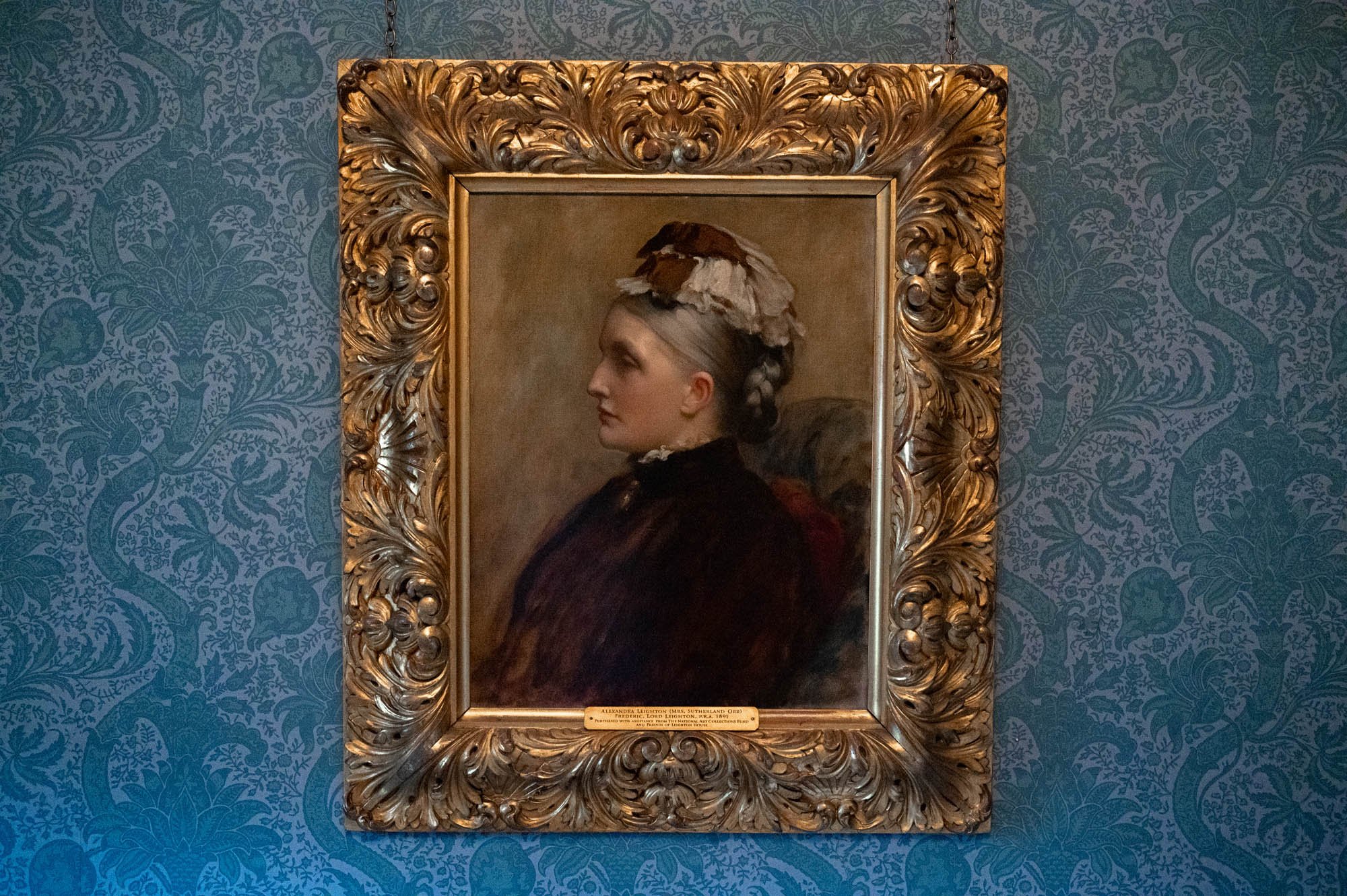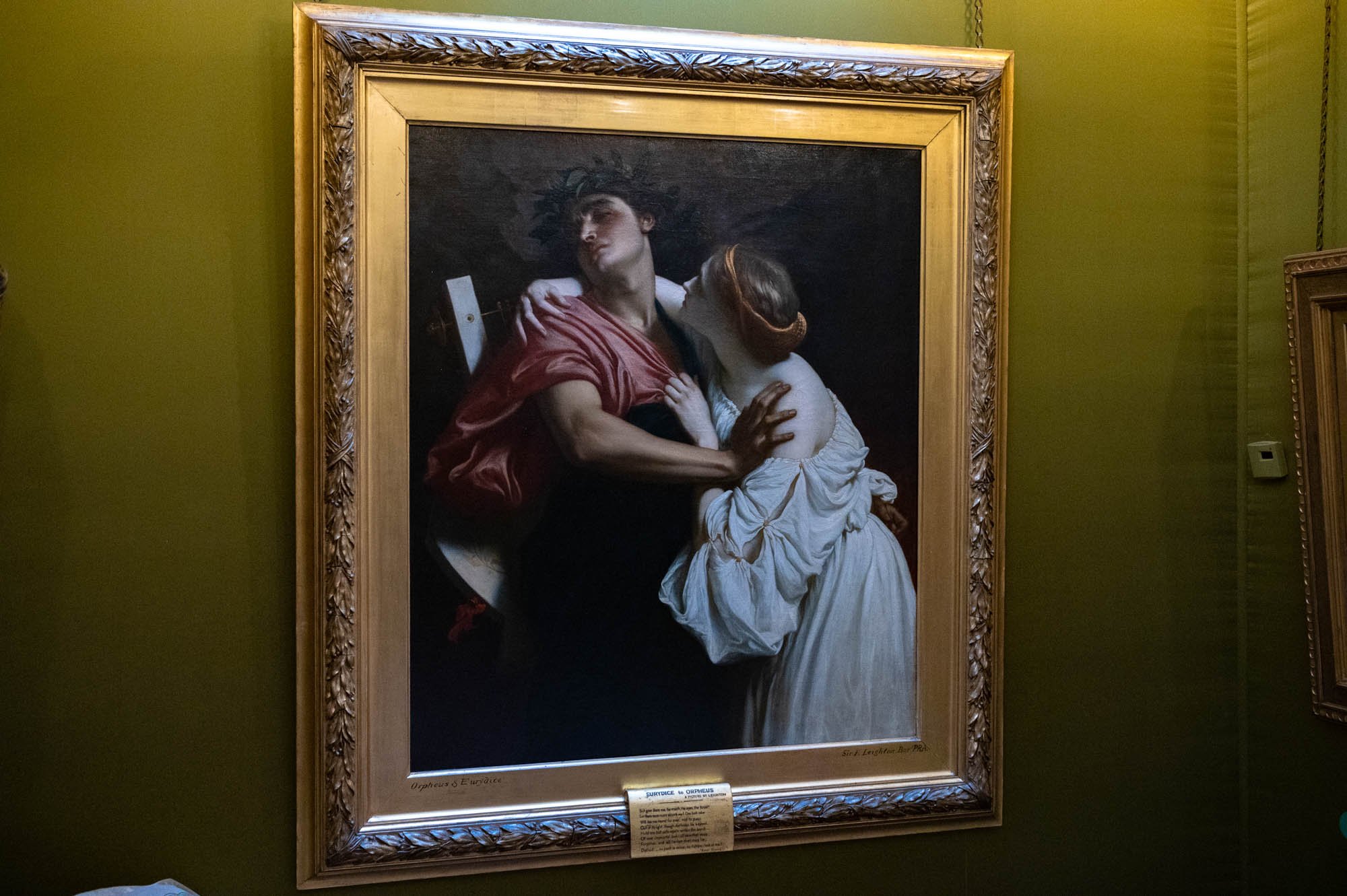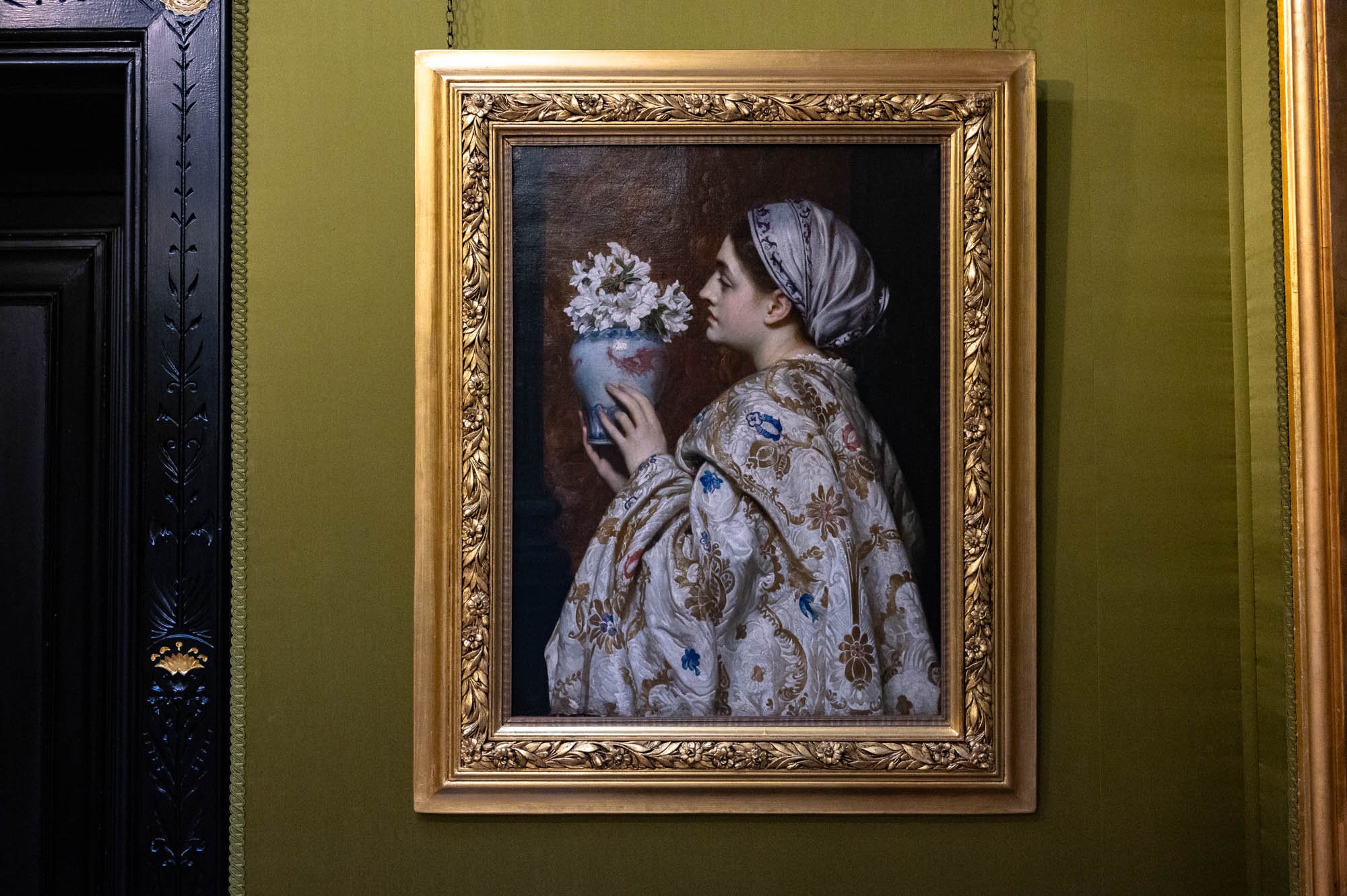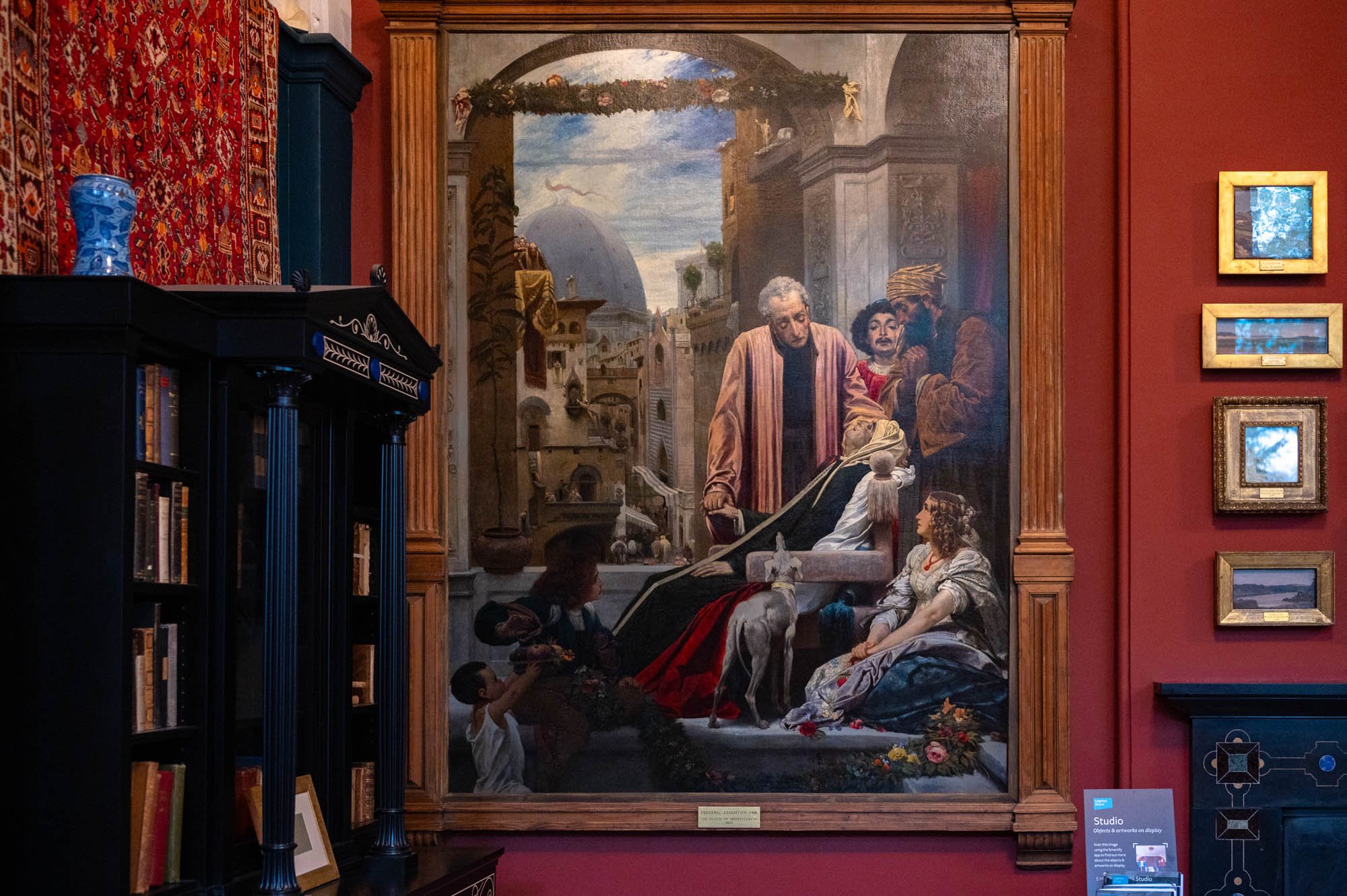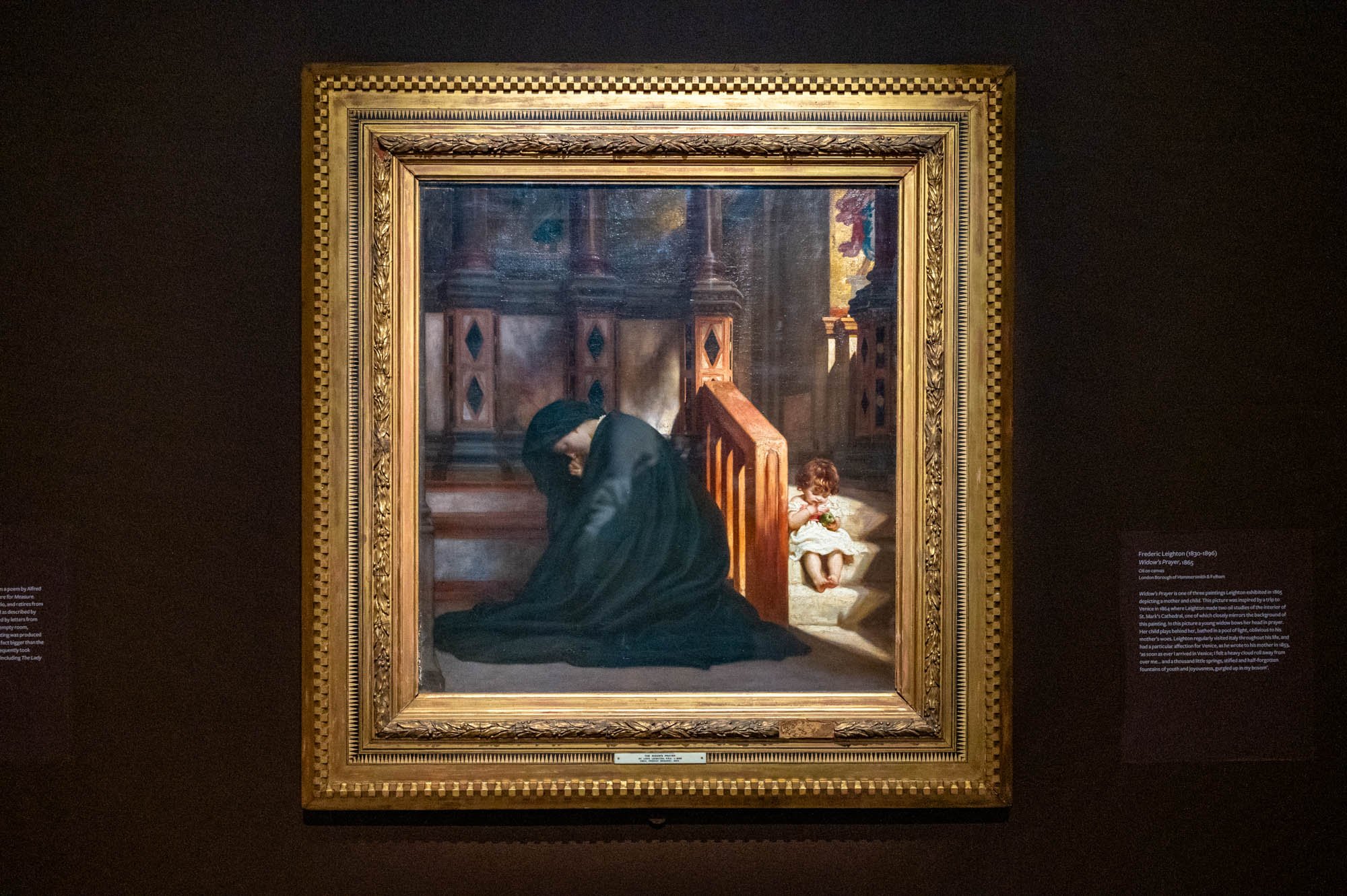The Genius of Frederic Leighton and Leighton House
The Leighton House Museum is an art museum and historic house in the Holland Park area of the Royal Borough of Kensington and Chelsea in West London.
Frederic Leighton, a luminary of the Victorian art scene, left a lasting impact on the canvas of art history. Born in 1830, he became one of the leading figures of the Aesthetic Movement, a 19th-century artistic and literary movement that championed "art for art's sake." His extensive body of work as a painter and sculptor reflects his appreciation for beauty, harmony, and a meticulous attention to detail.
Flaming June, Frederic Leighton, 1895
Lord Leighton in the studio
Leighton's artistic prowess earned him the prestigious position of President of the Royal Academy, demonstrating his influence in shaping the British art scene. His paintings often portrayed classical and historical themes, showcasing a fascination with mythology and the human form. One of his most famous works, "Flaming June," exemplifies his mastery of color, composition, and the portrayal of ethereal beauty.
19th century easels and exposed lighting studio, Leighton House
The Death of Brunelleschi, Frederic Leighton, 1852, Leighton House
As a classical artist, Leighton's creations drew inspiration from various cultural influences, reflecting his extensive travels and studies in Europe and the Middle East. His commitment to excellence extended beyond the canvas; it permeated every facet of his life, including his role as an art collector, patron, sculptor, and homeowner.
Taxidermy Peacock leading to The Arab Hall, Leighton House
His blending of art and architecture is perhaps most vividly embodied in Leighton House, his former residence located in the heart of London’s Kensington. Designed by architect and friend George Aitchison, the house itself is a masterpiece, seamlessly integrating various artistic styles.
Orpheus and Eurydice, 1864, Leighton House
Clytie, 1895, Leighton House
The Arab Hall is a highlight of the House, a stunning space adorned with a golden dome and a collection of Islamic tiles that encapsulates Leighton's appreciation for cultural richness and intricacy. As visitors explore the Silk Room, the Drawing Room, and the grand staircase, they are immersed in a world where every corner serves as a canvas for artistic expression.
The Arab Hall, Leighton worked closely with architect George Aitchison. They were inspired by different buildings that they admired on their travels to Palermo, Granada, Istanbul, Cairo and Damascus. This includes tiles Leighton had brought back with him from his travels.
Mosaic floors stretch across the Arab Hall, Narcissus Hall and staircase hall within the house.












